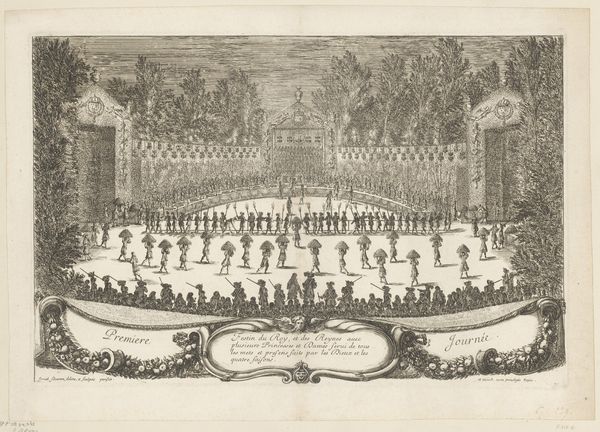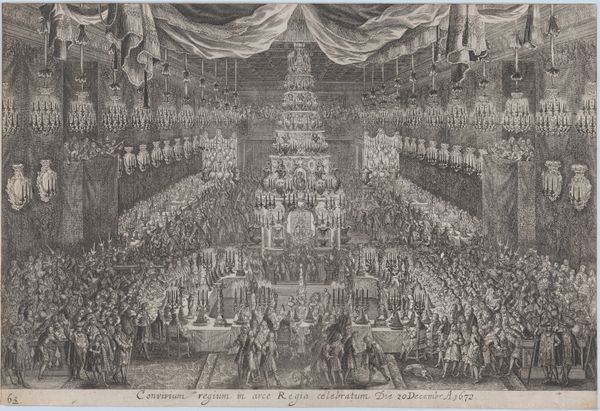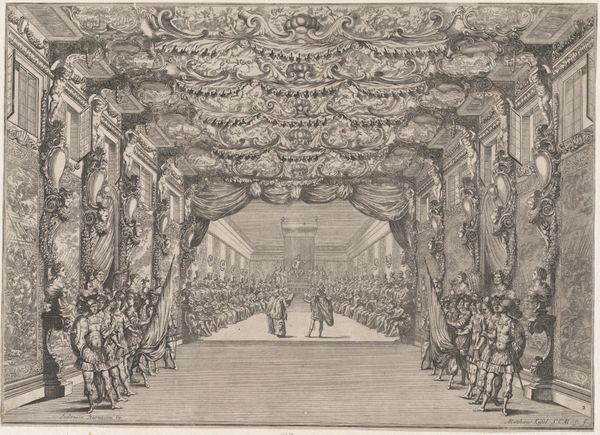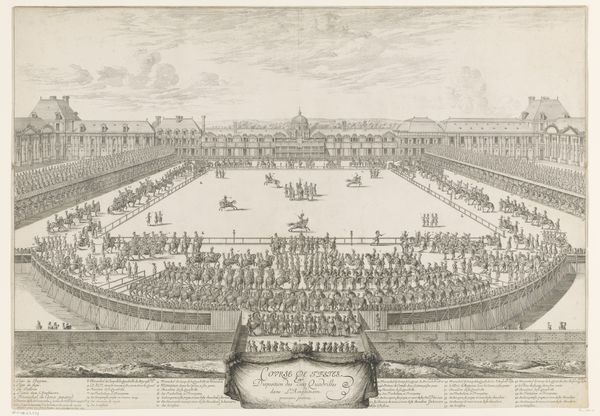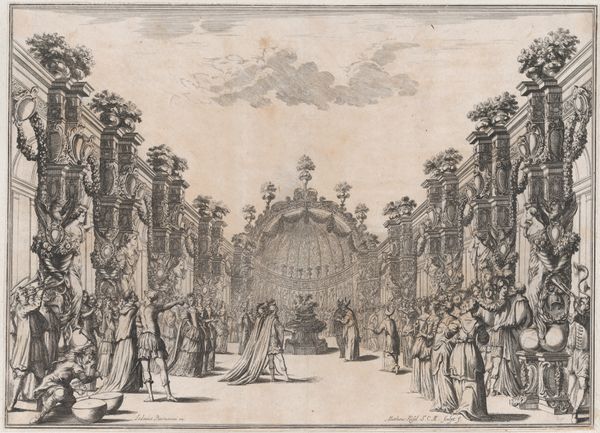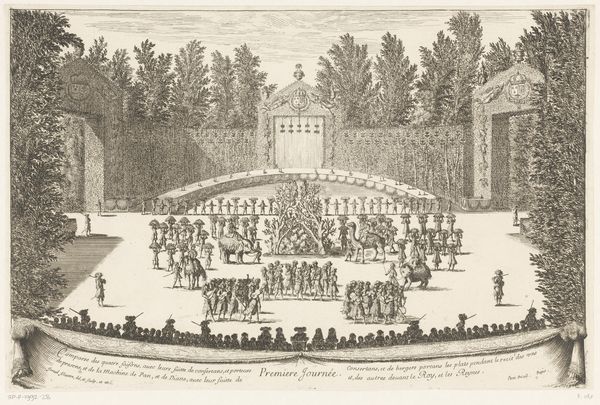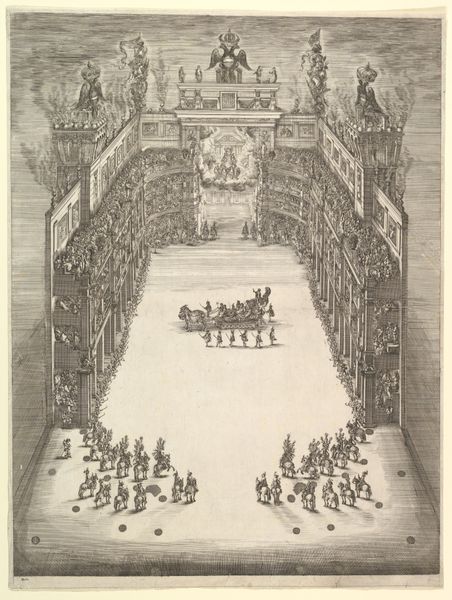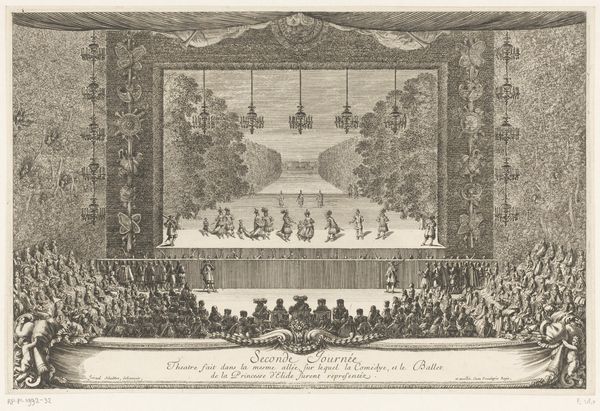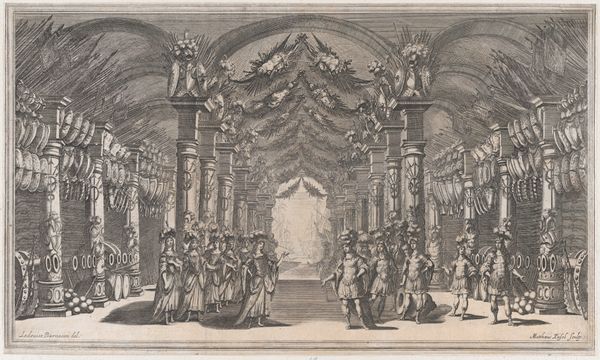
The Prince of Tuscany and his chariots arranged around Mount Atlas in center, a fountain at center in the foreground, a large arch displaying the Medici and the Orleans coats of arms in the background, spectators surrounding all sides, from 'Il mondo festeggiante' 1661
0:00
0:00
drawing, print, engraving
#
drawing
#
baroque
# print
#
perspective
#
figuration
#
line
#
cityscape
#
genre-painting
#
history-painting
#
engraving
Dimensions: Sheet: 11 3/4 x 17 5/8 in. (29.8 x 44.7 cm)
Copyright: Public Domain
Editor: Here we have Stefano della Bella’s engraving from 1661, "The Prince of Tuscany and his chariots arranged around Mount Atlas". It's teeming with figures and architectural details. I am struck by how meticulously everything is laid out; what draws your eye when you look at this? Curator: The immediate impression is one of spatial complexity rendered through the precision of line. Note how the receding planes are constructed: the foreground, with its bustling figures; the middle ground dominated by the elaborate fountain and procession; and the background culminating in the triumphal arch. How does this linear perspective guide your reading of the image? Editor: It directs me right to the center of the composition and Mount Atlas. The people in the foreground make it look larger than life. The more I look, the more I can see that this engraving really highlights the relationship between people, power, and the theatrical. Curator: Precisely. Now, let's consider the use of light and shadow, the chiaro-scuro, in delineating forms. The artist contrasts areas of dense hatching with relatively untouched spaces, creating a dynamic play. Do you find that it adds drama or emphasizes certain aspects over others? Editor: It definitely adds depth and makes certain elements pop. Without the contrasts, I don't think you would feel the same dramatic effect, or understand how the eye moves. I wouldn’t have noticed this initially, and understanding how carefully balanced the composition is adds to my appreciation of the work. Curator: Indeed. Analyzing these formal elements – the line, the perspective, the light – enables us to understand the aesthetic decisions, regardless of historical meaning, thus affecting our perception of the artwork as a whole.
Comments
No comments
Be the first to comment and join the conversation on the ultimate creative platform.
